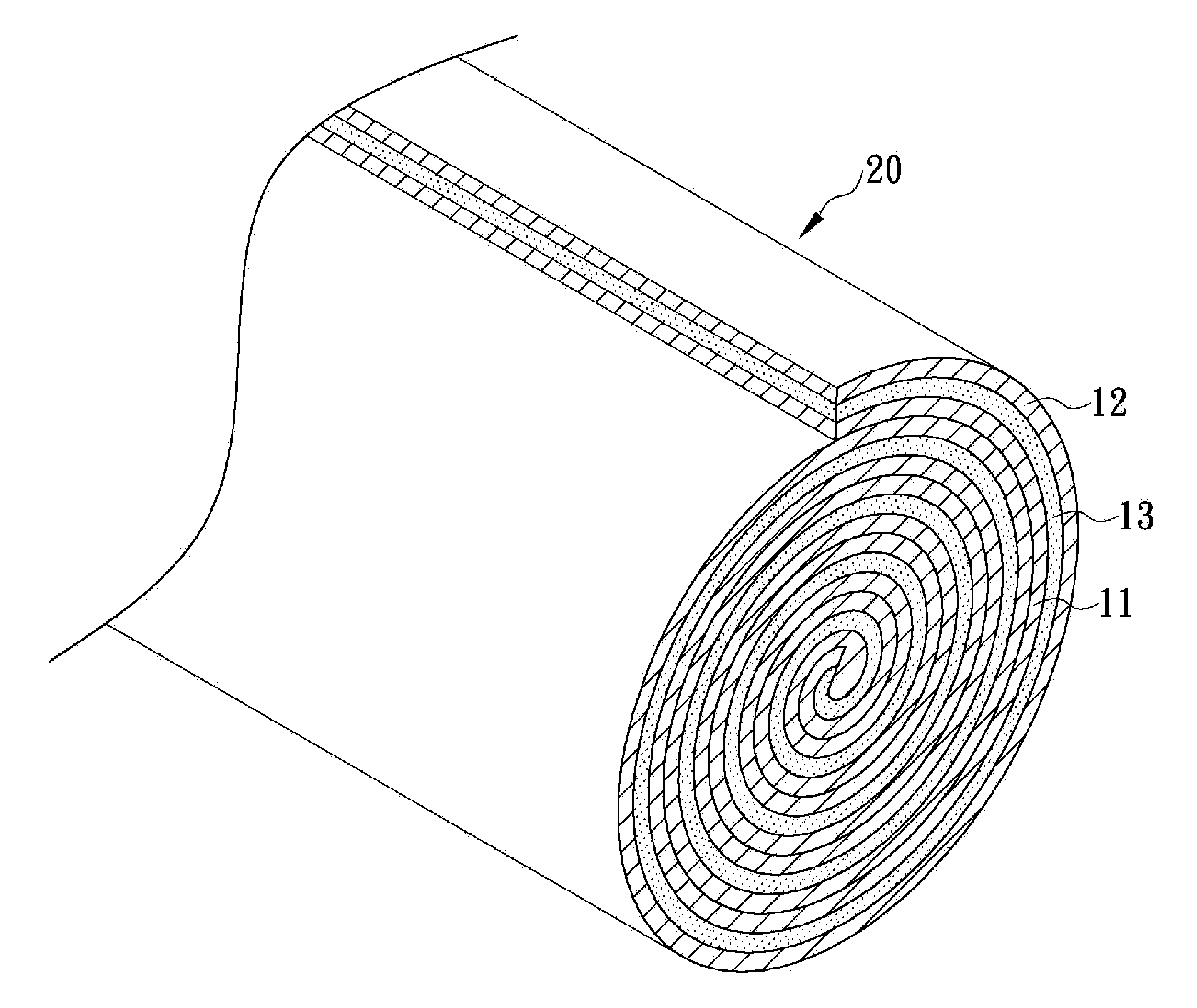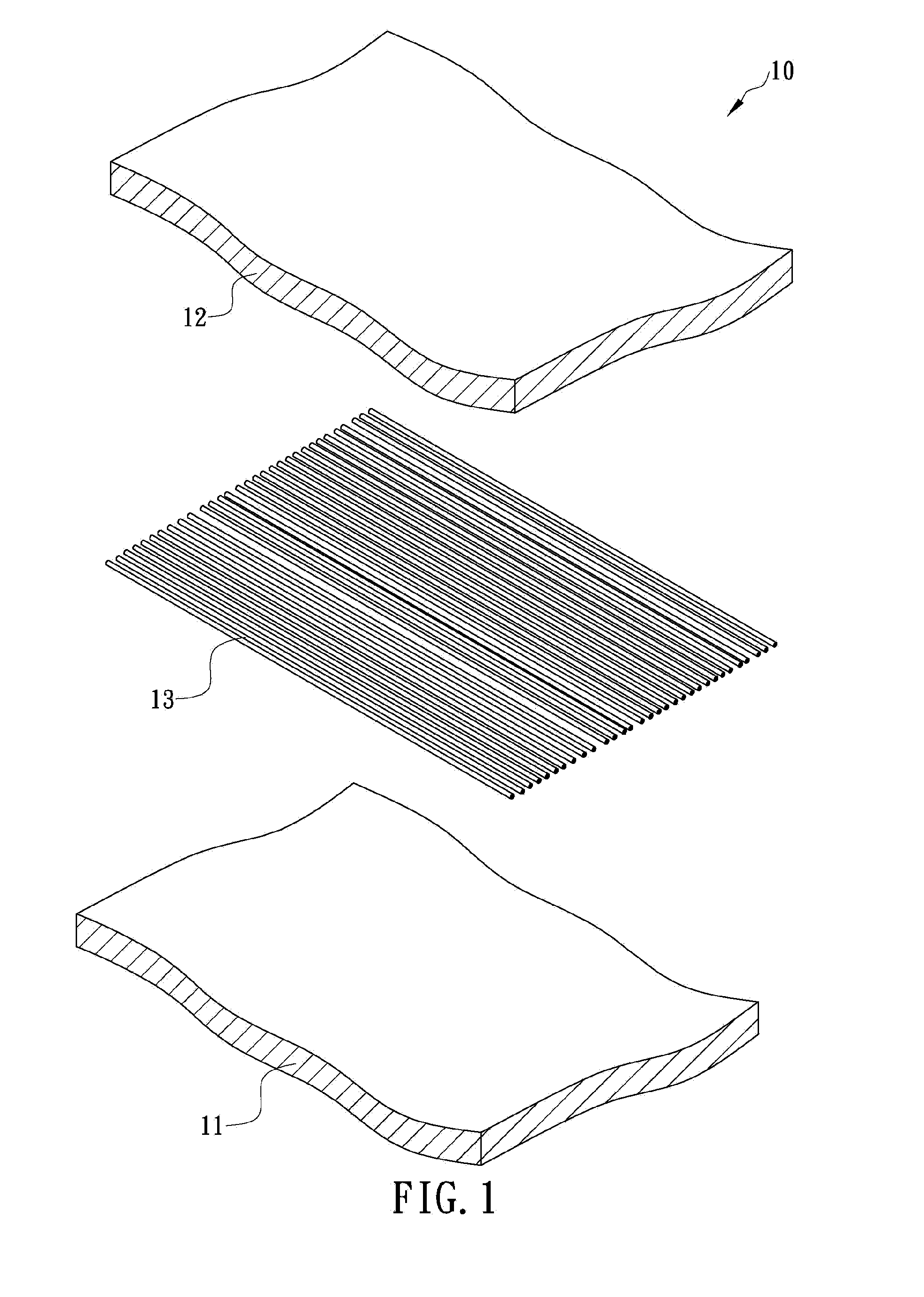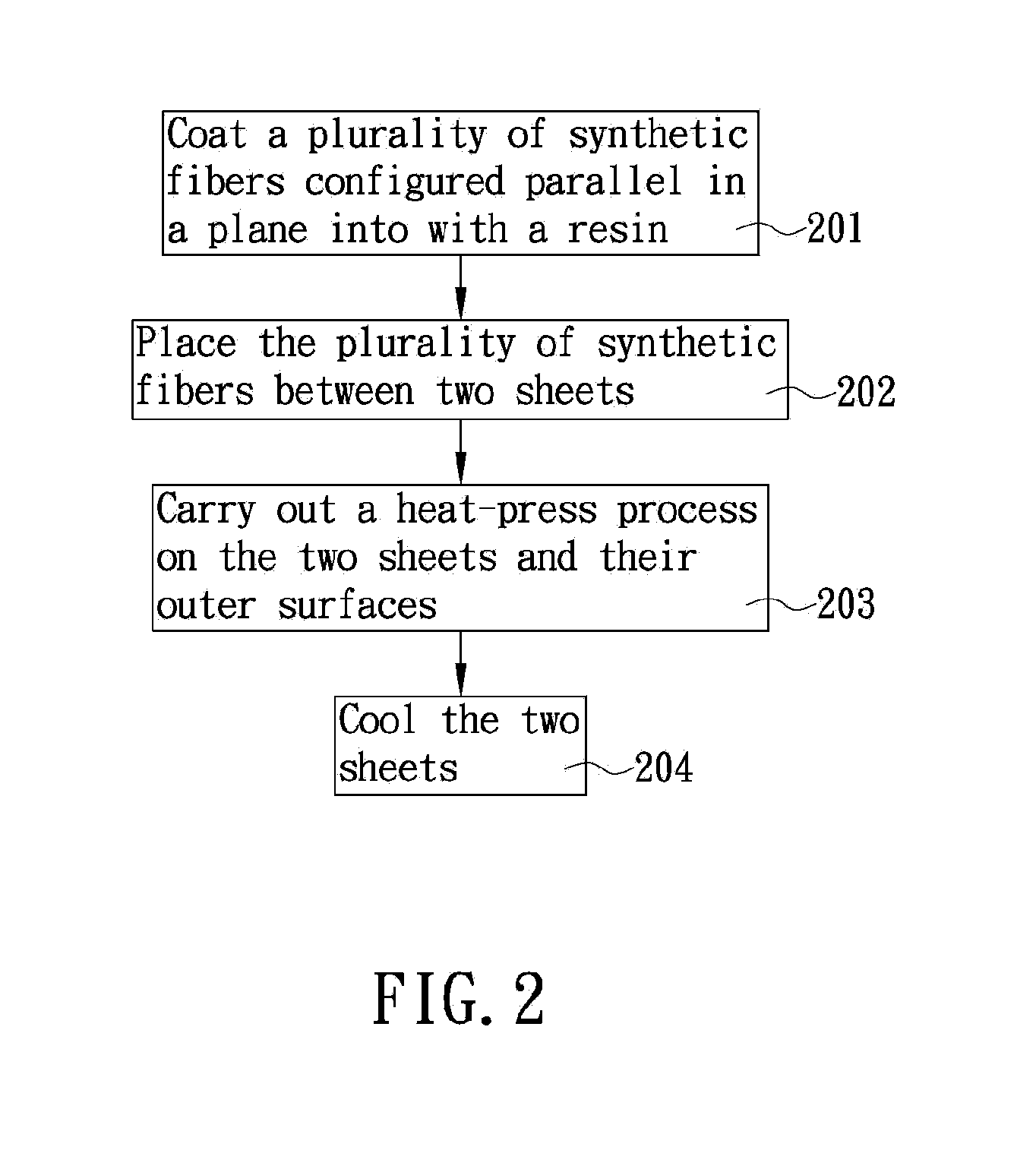Emulated wood with pores and fibers and fabrication method thereof
a technology of pores and fibers and emulated wood, which is applied in the field of emulated wood, can solve the problems of poor dispersion of wood fibers in plastics, affecting the popular use or application of aforementioned wpc or other plastic composites in our daily needs, and affecting so as to improve the interface properties of wpc, enhance the compatibility of wood and plastics, and reduce the surface polarity of wp
- Summary
- Abstract
- Description
- Claims
- Application Information
AI Technical Summary
Benefits of technology
Problems solved by technology
Method used
Image
Examples
Embodiment Construction
[0020]The purposes, processes, structure features, and effects of the invention may be more fully understood by the subsequent detailed description and examples with references made to the accompanying drawings.
[0021]Commercial thermoplastic elastomers (TPE) are polymers having the characteristics of high elasticity and high strength of rubber, and not only do they have the processability of thermoplastics but they also have the physical properties of vulcanized rubber, and thus is a combination of the advantages of plastic and rubber; in addition, the characteristics of superior ultraviolet-resistance, weather resistance, and high-temperature resistance renders it suitable for long-term outdoor applications. Therefore, the applications of TPE have gradually replaced those originally of vulcanized rubber. Furthermore, since the fabrication process of TPE usually requires no or short times of vulcanization, energy may be effectively saved and the generated waste (such as flash or res...
PUM
| Property | Measurement | Unit |
|---|---|---|
| Temperature | aaaaa | aaaaa |
| Temperature | aaaaa | aaaaa |
| Temperature | aaaaa | aaaaa |
Abstract
Description
Claims
Application Information
 Login to View More
Login to View More - R&D
- Intellectual Property
- Life Sciences
- Materials
- Tech Scout
- Unparalleled Data Quality
- Higher Quality Content
- 60% Fewer Hallucinations
Browse by: Latest US Patents, China's latest patents, Technical Efficacy Thesaurus, Application Domain, Technology Topic, Popular Technical Reports.
© 2025 PatSnap. All rights reserved.Legal|Privacy policy|Modern Slavery Act Transparency Statement|Sitemap|About US| Contact US: help@patsnap.com



